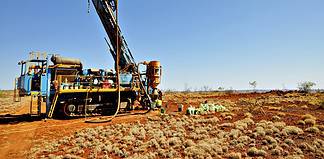Geoscientist unemployment and under-employment in Australia June 2009 – December 2016. Image: AIG.
By Elizabeth Fabri
MORE than half of Australian self employed geoscientists struggled to find work in the December quarter, latest research from Australian Institute of Geoscientists (AIG) has found.
In a survey conducted in February, AIG reported Australian geoscientist unemployment rate was 14.4 per cent and under-employment was 19.5 per cent as of 31 December 2016, marking a setback for the recovering industry following September green shoots.
While the results were higher compared to the 13.9 per cent and 18.8 per cent respectively at the end of September, unemployment was still lower than results collected in the first half of 2016.
“The improvement in employment prospects for Australia’s geoscientists evident during 2016 came to an end in the final quarter of 2016,” AIG stated.
Of the 485 respondents, more than half of self-employed geoscientists were unable to secure more than a quarter of their required workload resulting in a real unemployment rate of 24.5 per cent compared to 24.2 per cent in September.
South Australian geoscientists faced the highest rate of unemployment (24.1 per cent), followed by WA (15.5 per cent) and Queensland (12.9 per cent).
AIG council member Andrew Waltho said the results reflected a “seasonal pause in the gradual recovery of employment opportunities for geoscientists” and fragility of the Australian resources sector.
“The survey results clearly demonstrate that resource exploration in Australia remained flat through to the end of 2016, consistent with exploration expenditure figures reported by the Australian Bureau of Statistics at the end of February 2017,” Mr Waltho said.
“The Fraser Institute annual survey of mining companies for 2016 saw Western Australia and Queensland featuring in the top 10 most attractive jurisdictions for exploration investment globally, but this isn’t being reflected in actual investment needed to create jobs and sustain one of the most important sectors of the Australian economy.
“Improved prices for mineral commodities during 2016 have not translated into increased exploration investment and project pipeline renewal.”








































